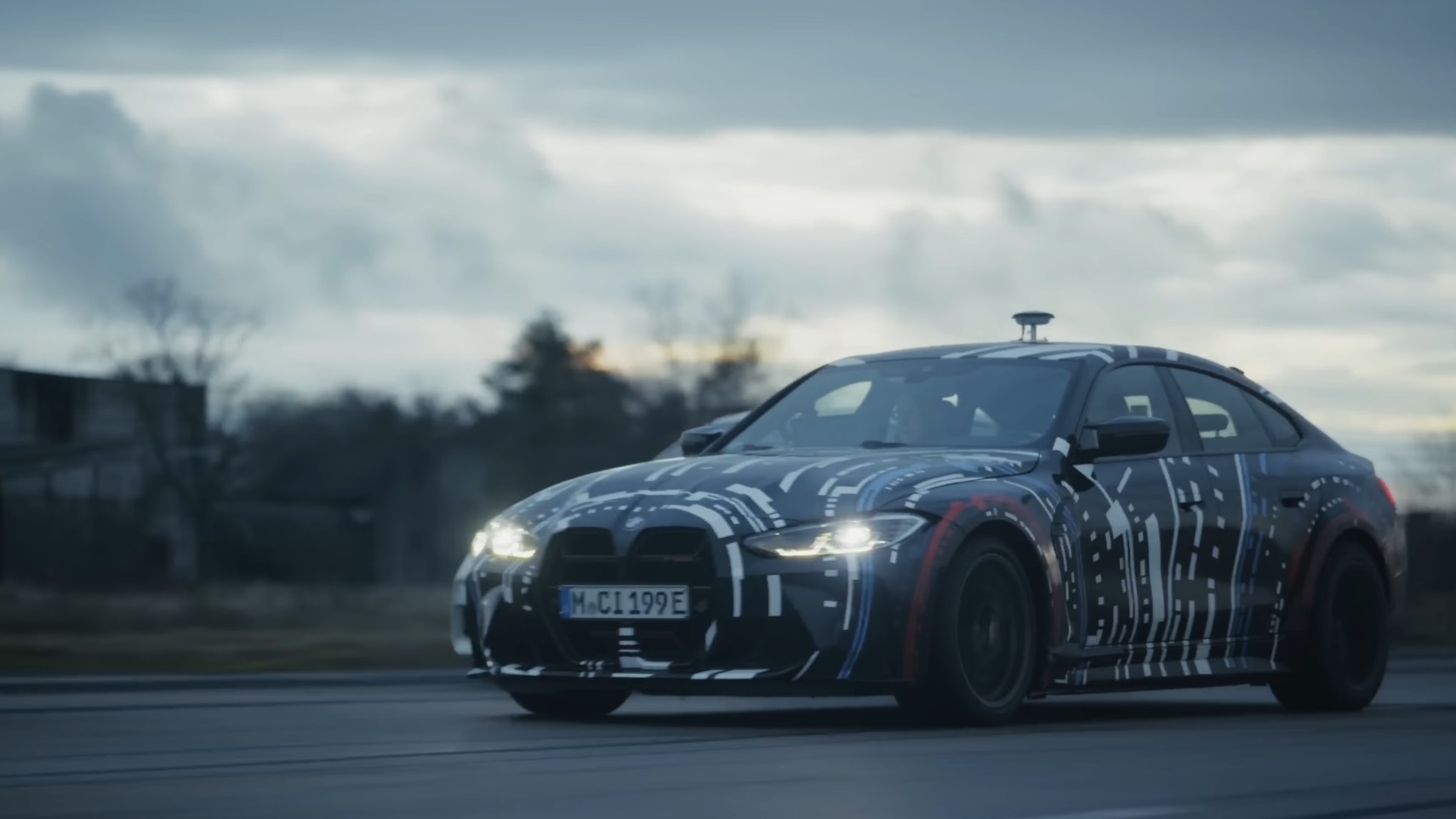

BMW M has taken on the Herculean task of developing a dedicated electric car. While making a lightning-quick EV is relatively easy, building one that’s engaging to drive is considerably more difficult. The brand claims it has found the secret recipe: four motors and a lot of tech.
Years in the making, M’s first EV will be based on BMW’s Neue Klasse architecture, which is scheduled to enter production in 2025. It’s not just a platform: the heritage-laced term denotes an entirely new approach to developing cars, including the exterior styling, the interior layout, and the materials used inside and out. There’s no word yet on what the BMW M EV will look like, because the test mules are based on a modified i4.

The first installment in a YouTube series explores the approach engineers are taking to developing the drivetrain, and, holy moly, it’s not simple.
“Today’s cars have a lot of control units to control the dynamic stability control, to control the brake system, the drivetrain, the steering, whatever, and they are all communicating. And then, you have, let’s say, a control logic that orchestrates this orchestra,” explains BMW M CEO Frank van Meel in the video. “We’re really good at doing that, but things are getting more and more complicated, so the way going forward is not to put more control units in the car but to centralize all of these control units in one central control logic,” he added. This approach saves weight, too.
BMW M’s first EV will need this giant brain, because its drivetrain will be far more complicated than, say, an M3’s. The brand outlined a system that consists of four individual motors (one per wheel) capable of operating independently. In theory, the central controller that runs the show can simultaneously brake the driver-side front wheel, let the passenger-side front wheel spin freely, and give the driver- and passenger-side rear wheels 50% and 100% power, respectively. Would it ever need to? Probably not, but you get the idea: there’s a lot to manage under the body.
Grouping all of the various control units into one also promises to deliver a drivetrain with stunningly quick response times, whether we’re talking about acceleration, torque vectoring, or brake recuperation. But will this be enough to offset the considerable amount of weight that an electric system adds? And, most important of all, will leveraging a boatload of technology allow BMW M to deliver an enthusiast-approved sports car?
The answers should trickle out in the coming months. Until then, BMW M is pouring a tremendous amount of resources into its first EV project.
Got tips? Send ’em to tips@thedrive.com